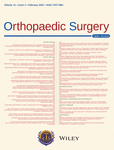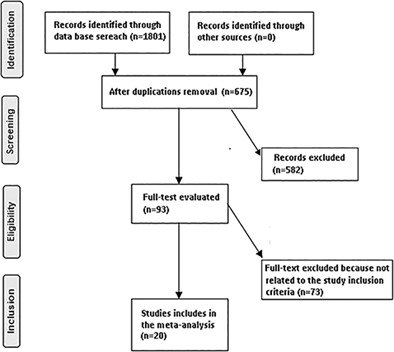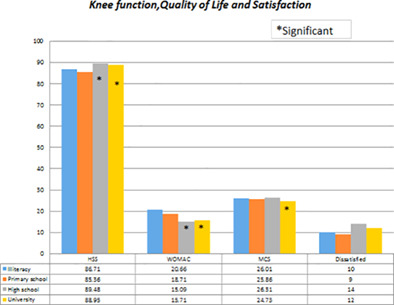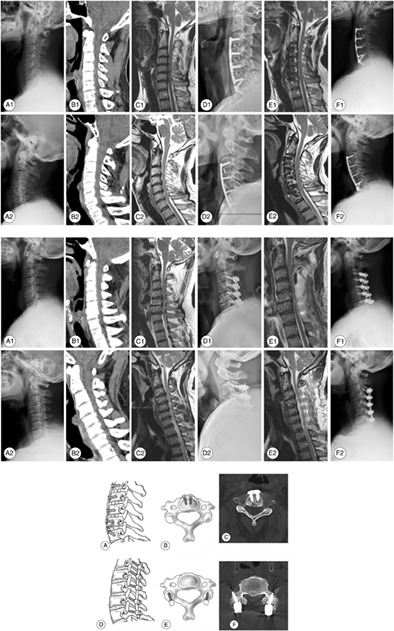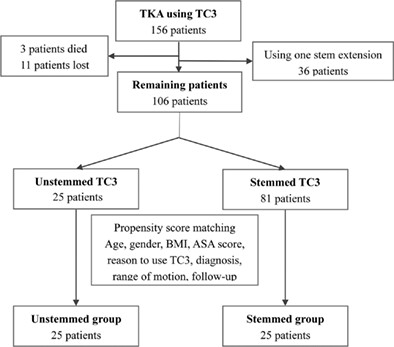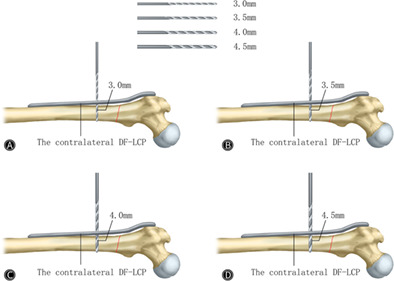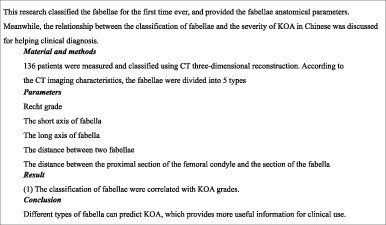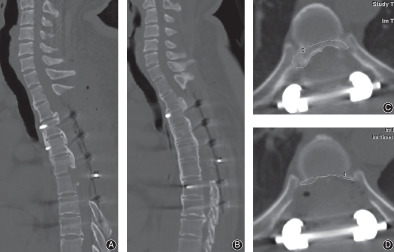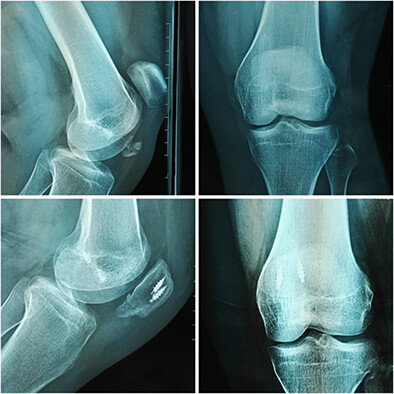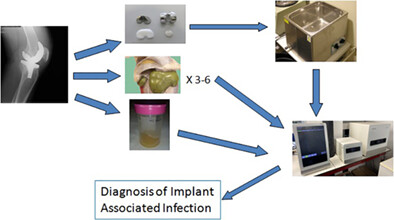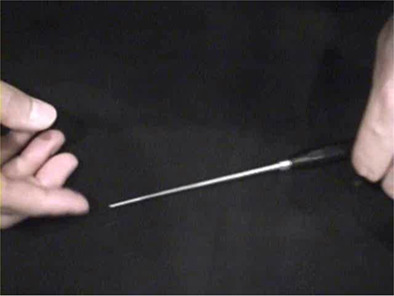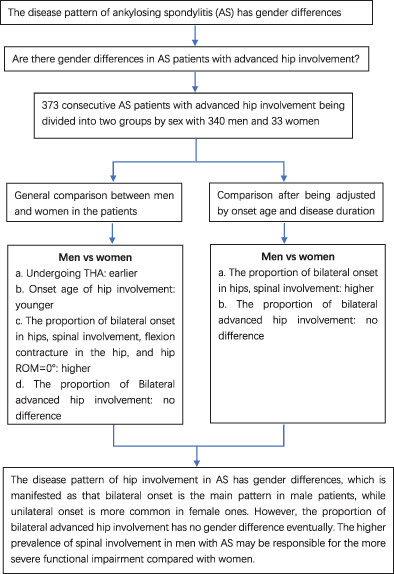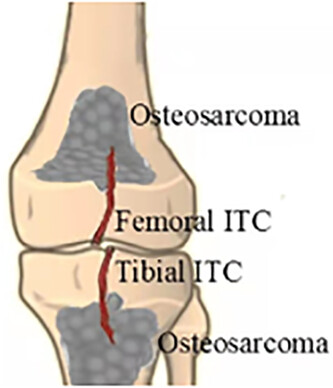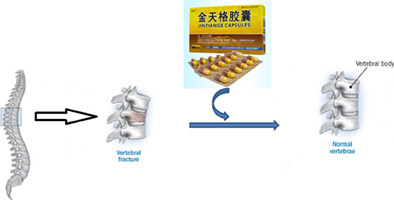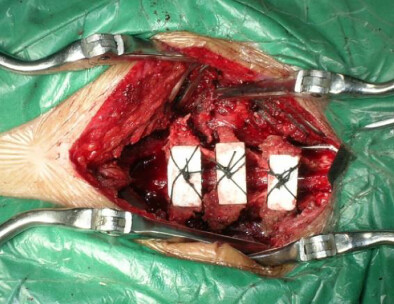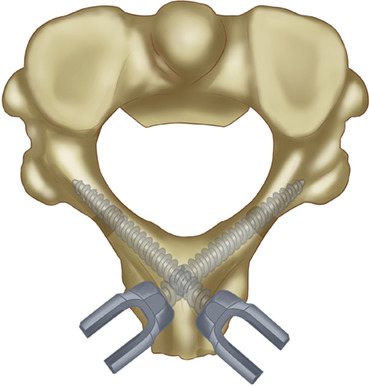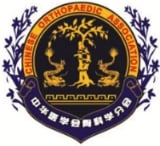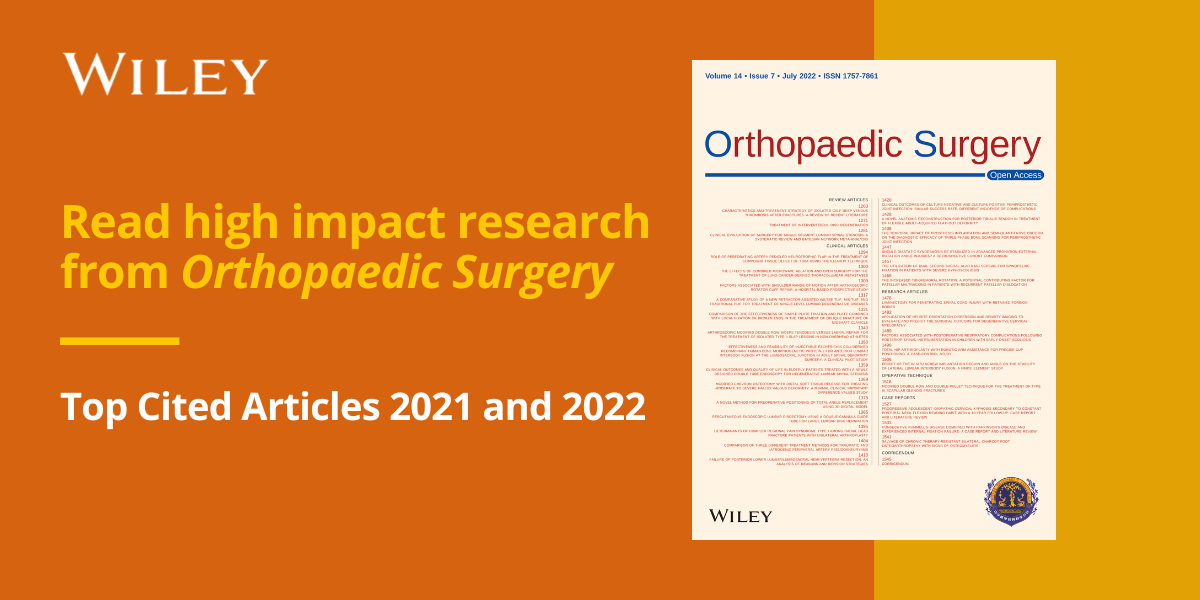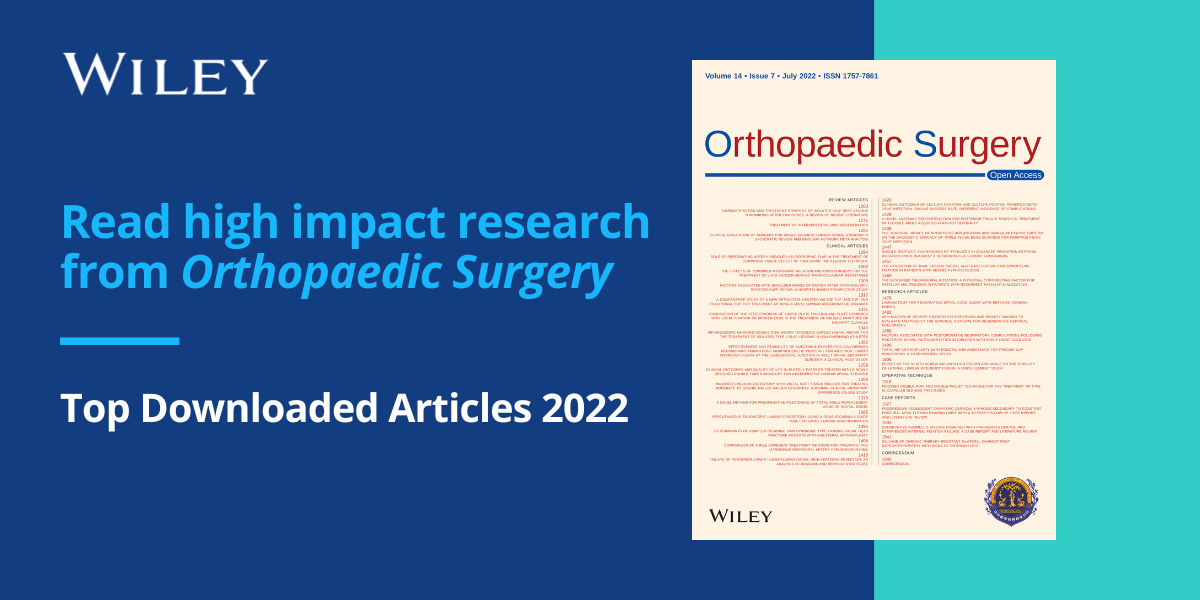Journal list menu
Export Citations
Download PDFs
ISSUE INFORMATION
REVIEW ARTICLES
Comparison of Outcomes After Total Knee Arthroplasty Involving Postoperative Neutral or Residual Mild Varus Alignment: A Systematic Review and Meta-analysis
- Pages: 177-189
- First Published: 13 December 2021
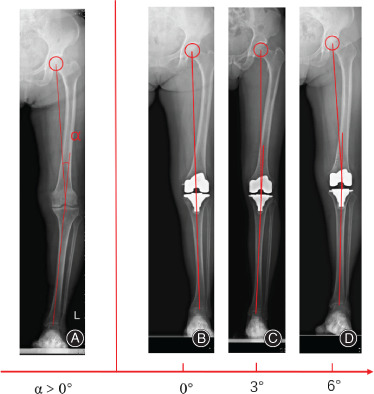
Method of calculation of preoperative and postoperative alignment and illustration of preoperative alignment and the neutral, mild varus and severe varus alignment after the operation, and compare the three groups outcomes. A: preoperative varus alignment; B,C,D: postoperative alignments; B-C: neutral alignment; C-D: mild varus alignment; >D: severe varus alignment.
Diagnostic Value of Next-Generation Sequencing in Periprosthetic Joint Infection: A Systematic Review
- Pages: 190-198
- First Published: 21 December 2021
Relationship between Change in Bone Mineral Density of Lumbar Spine and Risk of New Vertebral and Nonvertebral Fractures: A Meta-Analysis
- Pages: 199-206
- First Published: 04 January 2022
CLINICAL ARTICLES
Educational Attainment Affects the Early Rehabilitation of Total Knee Arthroplasty in Southwest China
- Pages: 207-214
- First Published: 13 December 2021
Reconstruction of Soft Tissue Defect With a Free Vascularized Anterolateral Thigh Flap After Resection of Soft Tissue Sarcoma in Extremities
- Pages: 215-220
- First Published: 13 December 2021
Percutaneous Robot-Assisted versus Freehand S2 Iliosacral Screw Fixation in Unstable Posterior Pelvic Ring Fracture
- Pages: 221-228
- First Published: 13 December 2021
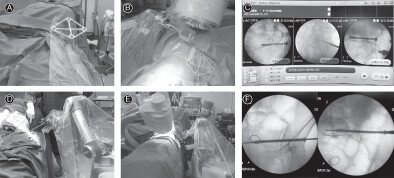
The six steps of percutaneous S2 IS screws with TiRobot system. (A) Install patient's tracker; (B) Digital image acquisition and registration; (C) Planning the screw position on the workstation; (D) The mechanical arm moves to the inserted position automatically; (E) Insert the guide wire; (F) Confirm the position of screw.
Comparison of Anterior Cervical Discectomy and Fusion with Cervical Laminectomy and Fusion in the Treatment of 4-Level Cervical Spondylotic Myelopathy
- Pages: 229-237
- First Published: 13 December 2021
Occipitocervical Revision Surgery Using the Bicortical Screw and Plate System for Failed Craniovertebral Junction Stabilization
- Pages: 238-245
- First Published: 13 December 2021
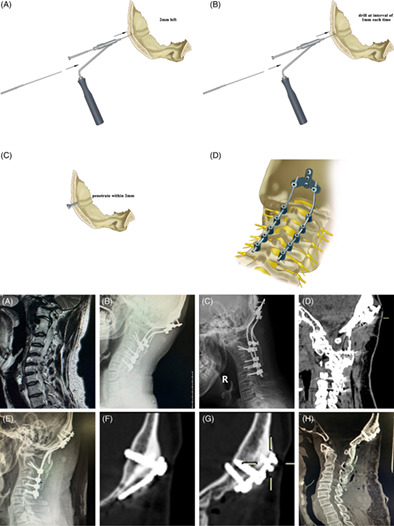
Illustration of revision surgery: (A) Firstly, the trajectory was deepened for the specific depth with a depth-limited drilling, 2 mm away from the inner occipital table. Meanwhile, a probe was used to explore all the walls of the trajectory in case of penetration. (B) The path was drilled with a depth-limited drilling at intervals of 1 mm each time until reaching the internal bone plate, and a probe was used subsequently. (C) Bicortical screws were inserted to the occipital plate and the depth of penetration was less than 2 mm from the internal bone plate. (D) Posterior view of instrument.
A Comparison Between Unstemmed and Stemmed Constrained Condylar Knee Prostheses in Primary Total Knee Arthroplasty: A Propensity Score-Matched Analysis
- Pages: 246-253
- First Published: 13 December 2021
The Treatment of Subtrochanteric Fracture with Reversed Contralateral Distal Femoral Locking Compression Plate (DF-LCP) Using a Progressive and Intermittent Drilling Procedure in Three Osteopetrosis Patients
- Pages: 254-263
- First Published: 15 December 2021
Adverse Tissue Reactions and Metal Ion Behavior After Small-Head Metasul Hip Arthroplasty: A Long-Term Follow-Up Study
- Pages: 264-273
- First Published: 15 December 2021
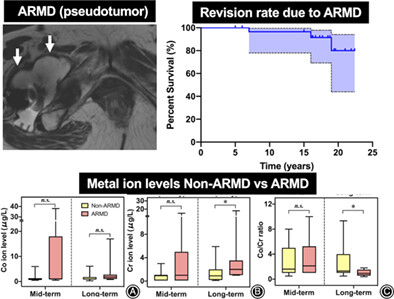
This study examines the long-term survivorship and incidence of adverse reactions to metal debris (ARMD) in patients who underwent small-head Metasul metal-on-metal (MoM) THA and evaluates the diagnostic potential of serum metal ion levels in identifying ARMD. ARMD was found in 21% of patients. The rate of revision surgery due to ARMD increased rapidly from 4% to 20% between 15 and 20 years after THA, and the survival rate decreased from 84.8% to 70.3%. A difference in the long-term in vivo behavior was observed between cobalt (Co) and chromium (Cr), and increased Cr ion levels and decreased Co/Cr ratio may be signs of ARMD in patients who underwent small-head MoM THA
Relationship between Classification of Fabellae and the Severity of Knee Osteoarthritis: A Relevant Study in the Chinese Population
- Pages: 274-279
- First Published: 16 December 2021
Comparison of the Clinical Outcomes of Full-Endoscopic Visualized Foraminoplasty and Discectomy Versus Microdiscectomy for Lumbar Disc Herniation
- Pages: 280-289
- First Published: 16 December 2021
A New Simple and Practical Clinical Classification for Tenosynovial Giant Cell Tumors of the Knee
- Pages: 290-297
- First Published: 16 December 2021
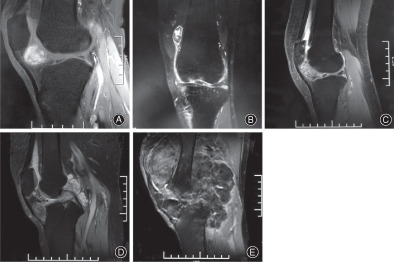
Based on each patient's TGCT preoperative imaging and intraoperative examination, three types and four subtypes of knee TGCT were identified and classified: Type 1: localized TGCT, Subtype 1a: localized intra-articular TGCT (A), Subtype 1b: localized extra-articular TGCT (B). Type 2: diffuse TGCT, Subtype 2a: diffuse intra-articular TGCT with bone normal (C), Subtype 2b: diffuse intra-articular TGCT with bone destruction (D), Type 3: diffuse TGCT across the knee joint capsule (E). Arthroscopic tumor resection is recommended for TGCT with Subtype 1a, while direct tumor resection is recommended for TGCT with Subtype 1b. The TGCT with Subtypes 2a and 2b should be completely removed while TKA is recommended for some patients with severe bone destruction in Subtypes 2b. Neoadjuvant or adjuvant therapies should be recommended for TGCT with Type 3.
Long-Term Follow-Up of Multilevel Thoracic Ossification of the Posterior Longitudinal Ligament Following Circumferential Decompression via Posterior Approach: A Retrospective Study
- Pages: 298-305
- First Published: 16 December 2021
The Potential Value of Monocyte to Lymphocyte Ratio, Platelet to Mean Platelet Volume Ratio in the Diagnosis of Periprosthetic Joint Infections
- Pages: 306-314
- First Published: 22 December 2021
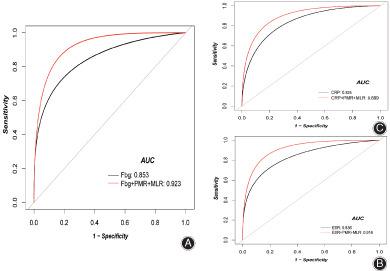
Blood tests and joint aspiration used as tools for the preoperative diagnosis of periprosthetic joint infection (PJI). Although these tests show good diagnostic value. Joint aspiration as an invasive procedure may increase the risk of deep infections and often fails to aspirate joint fluid. Thus, there is a need to get more accurate information on blood tests to diagnose PJI. This study included the full range of serological inflammation-related markers, based on the prediction model, multiple combinations analyzed, and the best combinations of serum markers selected.
The Reinforced Ma–Griffith Method Combined with Minimally Invasive Small-Incision Suture for Acute Achilles Tendon Rupture
- Pages: 315-322
- First Published: 22 December 2021
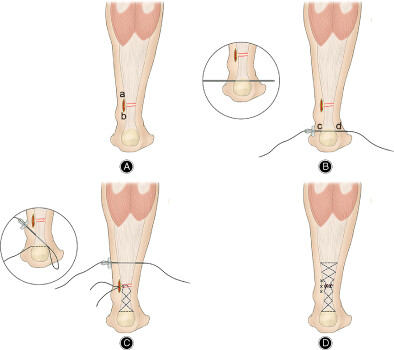
This study aimed to evaluate the treatment effects of the reinforced Ma–Griffith method combined with a minimally invasive small incision in the treatment of acute Achilles tendon rupture. I: Summary of patients' preoperative status. II: Reinforced Ma–Griffith method combined with a minimally invasive small-incision technique. III: Summary of patients' postoperative recovery status (AOFAS and ATRS).
A Crucial But Neglected Anatomical Factor Underneath Psoas Muscle and Its Clinical Value in Lateral Lumbar Interbody Fusion—The Cleft of Psoas Major (CPM)
- Pages: 323-330
- First Published: 22 December 2021
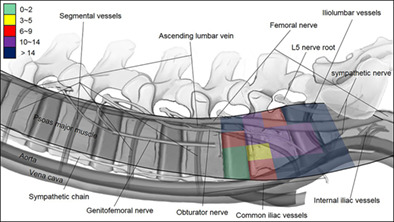
Although the occurrence and distribution of neurovascular structures within the CPM is complex and varies greatly, it can provide a potential cavity for visualization during LLIF. Using psoas major as a reference, this novel grid system can be used to identify the CPM beneath the psoas muscle and thus identify a safe entry point for surgery.
Anatomical Evaluation of Spinal Nerve and Cervical Intervertebral Foramina in Anterior Controllable Antedisplacement and Fusion Surgery: A Cadaveric and Radiologic Study
- Pages: 331-340
- First Published: 22 December 2021
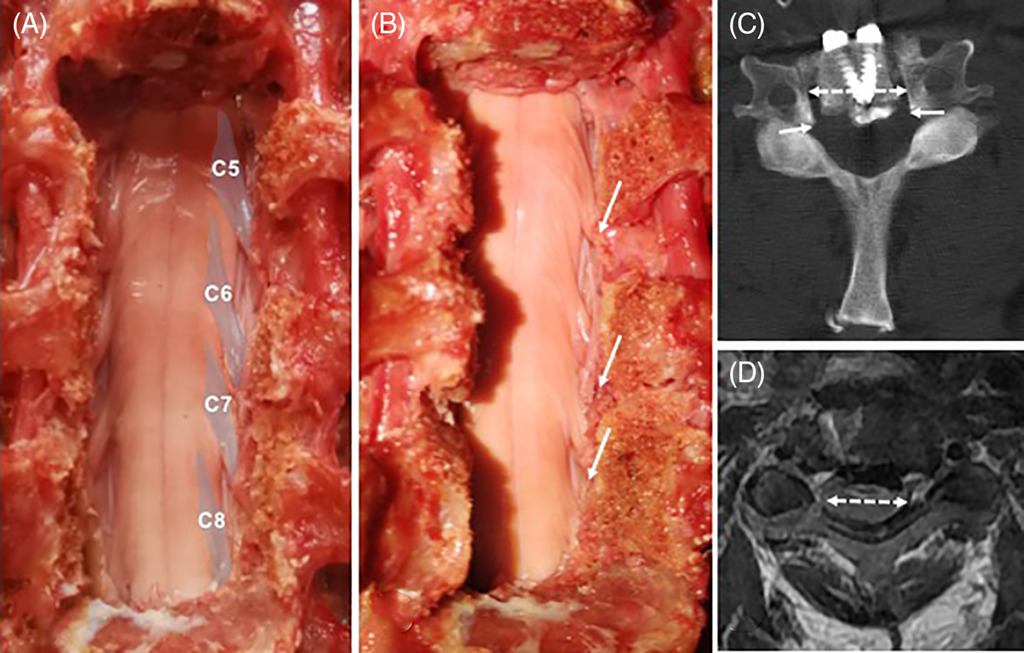
ACAF can decompress the entrance zone of intervertebral foramina effectively, which provides more space for nerve roots to pass through the narrowest part of the intervertebral foramina. Cadaveric and Radiographic measurements indicated the decompression width in ACAF surgery included the origins and massive running part of bilateral ventral rootlets in the spinal canal.
Variation in Global Spinal Sagittal Parameters in Asymptomatic Adults with 11 Thoracic Vertebrae, four Lumbar Vertebrae, and six Lumbar Vertebrae
- Pages: 341-348
- First Published: 22 December 2021
Failed Primary Surgery in Congenital Scoliosis Caused by a Single Hemivertebra: Reasons and Revision Strategies
- Pages: 349-355
- First Published: 22 December 2021
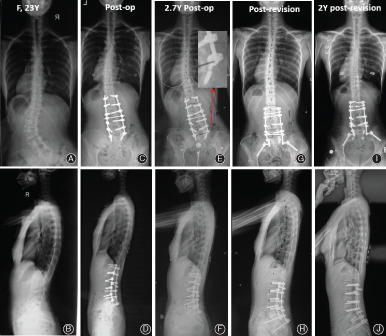
The common reasons for failed primary surgery in CS patients with SHV undergoing posterior spinal fusion were severe post-operative curve progression of focal scoliosis, implant failure and trunk imbalance. The revision strategies including resection of residual hemivertebra, extended fusion levels, complete pseudarthrosis resection, replacement of fixation and horizontalization of UIV/LIV.
Cervical Transdural Discectomy with Laminoplasty for the Treatment of Multi-segment Cervical Spinal Stenosis Accompanied with Cervical Disc Herniation: Technical Note and Clinical Outcome
- Pages: 356-364
- First Published: 27 December 2021
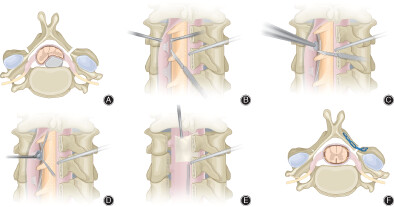
In the study, we describe the surgical technique of cervical transdural discectomy with laminoplasty for the treatment of multi-segment cervical spinal stenosis accompanied with cervical disc herniation and investigate its surgical outcomes and complications in 31 patients. We found that cervical transdural discectomy with laminoplasty technique could acquire satisfactory surgical outcomes for those patients, but the surgical indications of the patients need to be selected strictly.
An Approach to Intraoperatively Identify the Coronal Plane Deformities of the Distal Tibia When Treating Tibial Fractures with Intramedullary Nail Fixation: a Retrospective Study
- Pages: 365-373
- First Published: 28 December 2021

Use the parallel relationship between the distal horizontal interlocking screw and the tibiotalar joint surface on the anteroposterior fluoroscopy film to determine the onset of valgus or varus angulation of the distal tibial fragment in the treatment of tibial fracture with intramedullary nail fixation, correct the coronal plane varus/valgus angulation of the fracture zone intraoperatively, neutralize the forces and restore a satisfactory reduction.
Anchor and Krackow-“8” Suture for the Fixation of Distal Pole Fractures of the Patella: Comparison to Kirschner Wire
- Pages: 374-382
- First Published: 29 December 2021
Usefulness of a Multiplex PCR Assay for the Diagnosis of Prosthetic Joint Infections in the Routine Setting
- Pages: 383-388
- First Published: 02 January 2022
Ball Tip Technique for S2AI Screw Placement in Sacropelvic Fixation: A Comparative Study with Conventional Freehand Technique
- Pages: 389-396
- First Published: 02 January 2022
Non-Anatomical Arthroscopic All-Inside Repair of Medial Meniscus Posterior Root Tear to Posterior Cruciate Ligament for Patients with Normal Lower Limb Alignment
- Pages: 397-404
- First Published: 24 February 2022
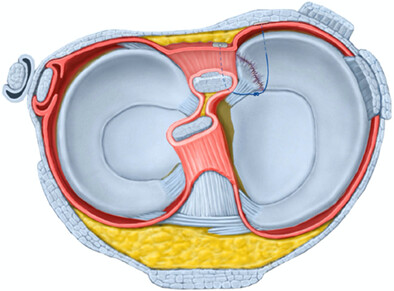
Non-anatomical arthroscopic all-inside horizontal mattress suturing repair of MMPRT to PCL in type II MMPRT patients with normal lower limb alignment yielded beneficial clinical outcomes and a higher rate of clinical healing. This technique could be an alternative to the transtibial pullout suture or anchor suture repair technique.
Gender Differences in Ankylosing Spondylitis Patients with Advanced Hip Involvement: Results from A Matched Retrospective Cohort Study
- Pages: 405-410
- First Published: 13 December 2021
RESEARCH ARTICLES
Discovery and Characterization of Intercondylar Transphyseal Complexes and their Oncological Significance in Transphyseal Extension of Pediatric Osteosarcoma
- Pages: 411-421
- First Published: 24 February 2022
Efficacy of Transosseous Tunnel Placement for Triple Endobutton Plate in Acromioclavicular Joint Reconstruction: A Three-Dimensional Printing Guide Design Technology
- Pages: 422-426
- First Published: 13 December 2021
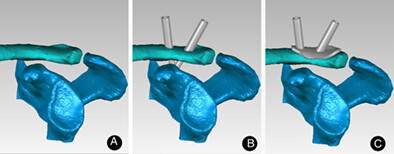
Establishment of guide design module (A) acromioclavicular joint reconstruction model; (B) two transosseous tunnels for triple Endobutton technology in 3D reconstruction acromioclavicular joint model; (C) acromioclavicular joint reconstruction model with guide design for triple Endobutton technology.
TRADITIONAL CHINESE MEDICINE IN ORTHOPAEDICS
Effect of Artificial Tiger Bone Powder (Jintiange Capsule®) on Vertebral Height Ratio, Cobb's Angle, Bone Mineral Density, and Visual Analog Score
- Pages: 427-434
- First Published: 22 December 2021
SURGICAL TECHNIQUE
Longitudinal Spinous-Splitting Laminoplasty with Coral Bone for the Treatment of Cervical Adjacent Segment Degenerative Disease: A 5-Year Follow-up Study
- Pages: 435-442
- First Published: 22 December 2021
Wright's Technique with the Addition of Visualized Axial Cortical Windows in Odontoid Fractures
- Pages: 443-450
- First Published: 16 December 2021
CASE REPORTS
Surgical Management for Posterior Atlantoaxial Dislocation without Fracture and Atlantoaxial Dynamic Test to Confirm the Integrity of the Transverse Ligament: A Case Report
- Pages: 451-455
- First Published: 15 December 2021
Cardiac Perforation Caused by Cement Embolism after Percutaneous Vertebroplasty: A Report of Two Cases
- Pages: 456-460
- First Published: 02 January 2022
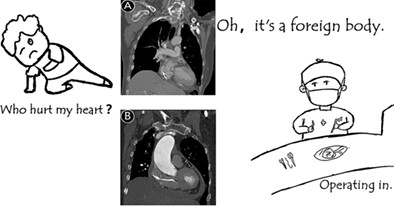
Percutaneous vertebroplasty (PVP) is a minimally invasive surgical technique for treating various vertebral disorders via transpedicular injection of polymethyl methacrylate into affected vertebrae. Here, we report two rare cases of cardiac perforation caused by cement escape into the venous system after PVP. The complications were corrected via open-heart surgery and patients were discharged after good recovery.




